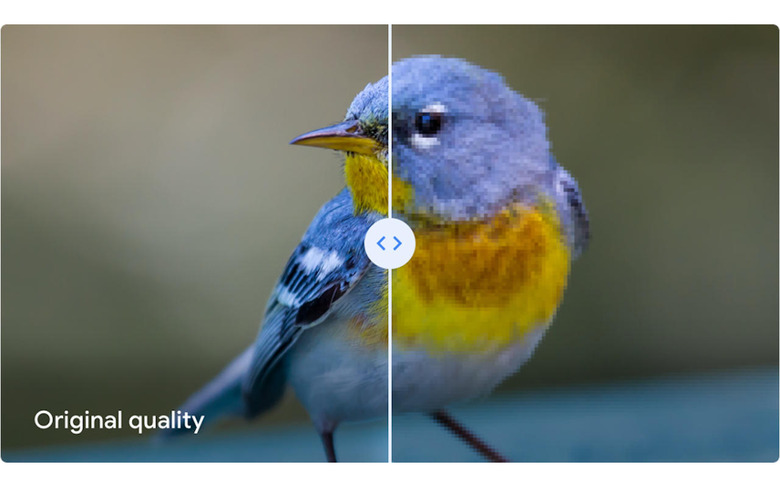Google Photos To End Free Unlimited Uploads: What It Means To You
Google Photos has brought a whole new dimension to treasuring cherished memories ever since it first burst into the scene in 2015. Right from that time, the photo sharing and cloud storage service has been popular for its free unlimited storage. Users have enjoyed this feature all these years, saving the most important moments with utter piece of mind – not having to worry about storage space running out on their device.
Google's trusted service gives unlimited cloud storage for photos and videos of up to size 16MP and 1080p resolution. Anything uploaded beyond these limits is simply scaled down to the mentioned parameters – called the High Quality storage. Basically, users don't have to do anything beyond, hitting the "back up now" button or keep automatic backup on for the secure backup of all photos and videos.
Brace for the change
Starting June 1, 2021, Google Photos will count all the uploaded images and videos against the free 15GB storage with your Google account. Go past the threshold and you'll have to get the Google One subscription to keep enjoying the service.
The foundation for the move was laid back in November 2020 when Google Photos lead David Leib tweeted the reason for this strategic move. According to him, providing completely free backups is costing the company heavily. So, Google had no other way but to alight the primary cost of running the service and accepting the primary value of online storage.
Already more than a billion people are uploading a whopping 28 million photos to the platform each week. Understandably, to meet the expenses and provide streamlined service that users have got used to all these years, demands a subscription model going forward.
What about existing uploads
Users who rely on Google Photos to upload their device's content need not worry about their existing files. The existing high-quality content will remain exempt from the upcoming storage restrictions. It's only after the mentioned date, any new uploads will start ticking the Google account storage meter.
If you manually backup the photos and videos to the service, it is a wise idea to go through your library again and upload any important content before June 1. Anything on or after June 1 will start adding to the space in your designated 15 GB storage quota.
Users will also get a new feature starting June 1 that'll be more of a photos and video management tool. The AI tool will analyze your stored files and suggest if you want to get rid of photos that are blurry or video clips that are too big to fit on the 15GB free limit.
Existing Pixel users need not worry
Pixel devices being part of the Google ecosystem have the privilege of enjoying the benefits further. Yes, Pixel owners need not worry, as they will get free unlimited storage for high quality uploads. If the users choose to upload the original quality of photos and videos, it will however count toward Google account storage. But yes, nothing for the high quality 16MP and 1080p criteria.
For Pixel 2 and Pixel 2 XL owners, they can enjoy unlimited upload of photos and videos at the Original Quality settings until the end of 2021. It is beyond that time frame any content will be scaled down to the High Quality resolution for cloud storage. Users who have the Google Pixel 3 and Pixel 3 XL devices will enjoy this benefit until January 31, 2022. After that the same methodology will follow for any new photos or videos – i.e. they will be scaled down to High Quality settings.
The newer devices in the lineup including Pixel 4, Pixel 4 XL, Pixel 4a and the Pixel 5 will however not get the free unlimited uploads in the Original Quality settings. They'll have to live with the free unlimited High Quality storage option. Also, Google will not provide the luxury of free photo and video storage for Pixel devices released in the future.
What are the options?
Once you reach the 15GB storage quota, you'll have to figure out the options on the table. You can go for the Google One program which is a unified cloud storage platform for Google products. The service has spread across 140 countries ever since its launch in 2018.
The 100GB tier for the plan costs $1.99 per month or $19.99 per year. A 200GB storage slot will bump up the price to $2.99 per month or $29.99 per year. Then there is the 2TB plan which will set you back $9.99 per month or $99.99 per year. These plans should be more than enough for normal usage. If you do require more storage due to professional requirements, there is the 10TB plan for $99.99, 20TB for $199.99 and 30TB for $299.99 per month.
The next best option is Microsoft OneDrive for those who want to try a service out of the Google ecosystem. The single-user plan gives 5GB free storage and thereafter the paid plans start. 100GB storage costs the same as Google at $1.99, and then is 1TB plan for $6.99 per month or $69.99 per year. The 1TB plan comes with Skype and office apps like Word, Excel, PowerPoint and Outlook. The Dropbox option is also open for single-user plans, as it provides 2GB of free storage and then up to 2TB storage for $9.99 per month.
It is clear, out of these options Google One provides the most set of choices. Android users will be better off sticking to the Google ecosystem for peace of mind – and yes – this is our recommendation as well. On the other hand, Microsoft OneDrive is worth consideration for professionals who want the added benefit of Microsoft Office suites.




